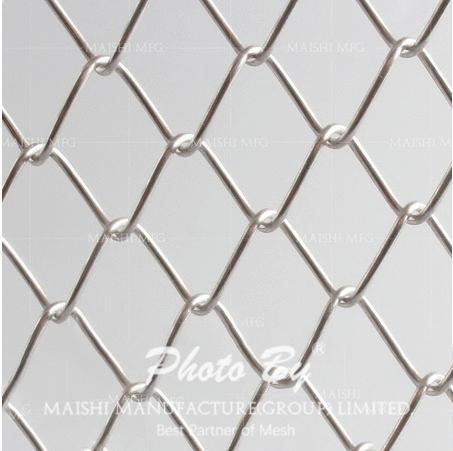
1. Check the gauge:
Gauge or diameter of wire is one of the most important factors - it helps tell you how much steel is actually in the chain link fabric. The smaller the gauge number, the more steel, the higher the quality and the stronger the wire. From lightest to the heaviest, common gauges for chain link fence are 13, 12-1/2, 11-1/2, 11, 9 and 6. Unless you are building a temporary chain link fence, we recommend your chain link fencing to be between 11 and 9 gauge. 6 gauge is typically for heavy industrial or specialized uses and the 11 gauge is a heavy residential chain link that stands up better to kids and pets.
2. Measure the mesh:
Mesh size tells you how far apart the parallel wires are in the mesh. That is another indications of how much steel is in the chain link. The smaller the mesh, the more steel is in the chain link fence. From largest to smallest, typical chain link mesh sizes are 2-3/8", 2-1/4" and 2". Smaller chain link meshes such as 1-3/4" is used for tennis courts, 1-1/4" for pools and higher security, the mini chain link meshes of 5/8", 1/2" and 3/8" are also available.
3. Consider the coating:
Several types of surface treatments help protect and beautify the look of steel chain link fence.
The most common protective coating for chain link fence is zinc. Zinc is a self-sacrificing element. In other words, it dissipates while protecting the steel. There are two primary ways that chain link fence is galvanized (coated with zinc). The most common is Galvanized After Weaving (GAW) where the steel wire is formed into chain link fence first and then galvanized. The alternative is Galvanized Before Weaving (GBW) where the strand of wire is galvanized before being formed into the mesh.

Leave a Comment